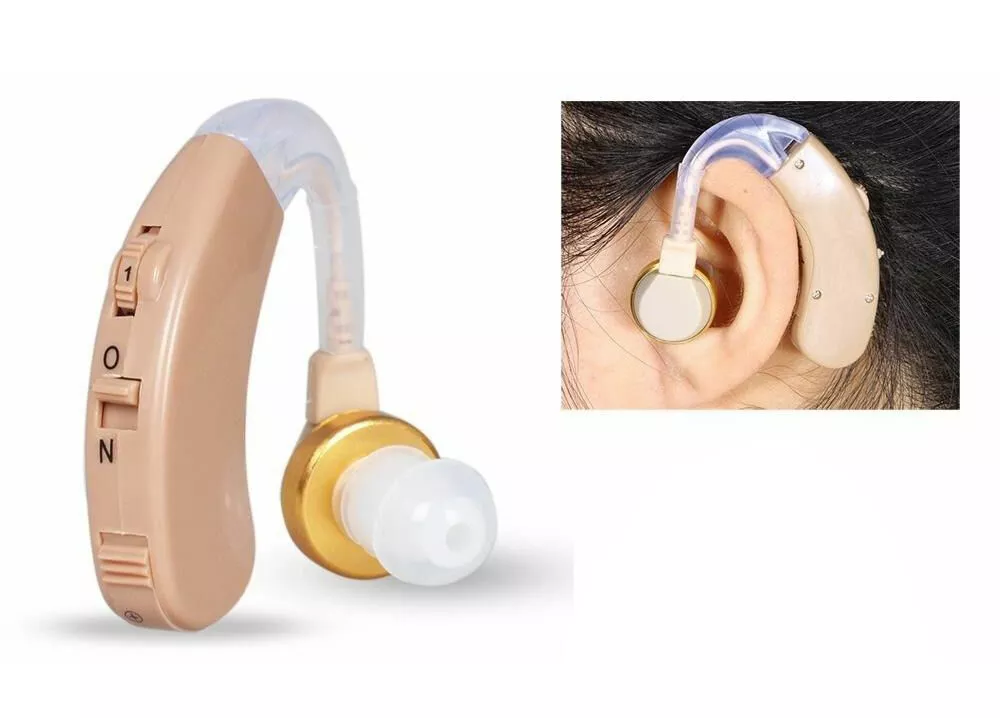Living in Pakistan, I’ve noticed an increasing number of older friends and family struggling to catch conversations. Whether age, a health issue, or years spent near loud noises caused the loss, the feeling of missing out can be heartbreaking. That’s where gadgets like Ear Hearing Machines and the classic hearing aids step in.
If you’re blanking on which path to take, trust me, I’ve stood in those shoes. In this post, I’ll lay out the ups, downs, costs, and day-to-day use of each option with our local market in mind. By the end, we should both have a clearer picture of what suits your life and pocket.
Understanding the Basics: What Are Ear Hearing Machines?
Before picking a tool, you should know what an Ear Hearing Machine really is. Unlike the high-tech, audiologist-customized models, these pieces are off-the-shelf amplifiers aimed simply at making speech and outside sounds louder and clearer.
Often branded as Personal Sound Amplification Products, or PSAPs, they work well for folks who don’t have a formal diagnosis but feel everyday chatter slipping away.
What Are Traditional Hearing Aids?
Traditional hearing aids are medical devices, meaning they follow strict rules and must be fitted by a pro. An audiologist measures your hearing loss and fine-tunes the aid to match. These gadgets come in styles like Behind-the-Ear (BTE), In-the-Ear (ITE), and Invisible-in-Canal (IIC).
They work best for moderate to severe loss and usually need regular check-ups, weaks, and sometimes repairs from a clinic.
Comparing Features: Ear Hearing Machine vs. Traditional Hearing Aids
Lets break down the main points where these two gadgets meet and differ:
Functionality
- Ear Hearing Machine: Simple volume boost for all sounds. Helpful for mild loss or when some quiet clues fade away, but not a real substitute for clinical care.
- Traditional Aids: Smart filters learn your hearing profile and tame noisy backgrounds. They aim to fix diagnosed loss with far more accuracy.
Ease of Use
- Ear Hearing Machine: Literally plug it in, turn a dial, and go. Most models need zero app or phone set-up, so they suit seniors or anyone nervous around gadgets.
- Traditional Aids: First comes a hearing test, then fitting dates, and finally calibration with the audiologist.
Comfort and Design
- Ear Hearing Machine: This type is usually bulkier and more noticeable than most people would like. Fortunately, the fresh models listed on Getnow.pk are slimmer, lighter, and far cozier to wear throughout the day.
- Traditional Hearing Aids: Because these devices are custom molded to your ears, they fit so well you might forget youre wearing them. They are also very hard to see, making them a favorite for folks needing long-term comfort and discretion.
Price Comparison
Price is one of the biggest deciding factors for many in Pakistan – thats never been truer.
- Ear Hearing Machine price in Pakistan: You can pick up a basic pair for only Rs. 1,999, while models with extra bells and whistles reach around Rs. 6,000. Reliable options are often in stock at Getnow.pk, and cash-on-delivery makes ordering stress-free.
- Traditional Hearing Aids in Pakistan: Expect to spend at least Rs. 20,000 for a simple set, with high-end international brands and features pushing the cost past Rs. 100,000.
Pros and Cons of Ear Hearing Machines
After putting an ear hearing machine through its paces, I can share some clear upsides and downsides.
Pros
- Affordable Compared to true hearing aids, these devices cost only a fraction of the price.
- Easy to Use Most come with simple buttons or a smartphone app, so adjusting the volume is a breeze.
- Readily Available Online You can order one from sites like Amazon or specialist stores within days.
- No Medical Prescription Required Because they are sold as amplifiers, you don’t need a doctors note to buy one.
- Ideal for General Hearing Assistance They work fine for watching TV or chatting in a quiet room.
Cons
- No Noise Filtering Unlike high-end aids, many models have only one mode, so noise stays in the mix.
- May Amplify Unwanted Background Sounds Doors creaking, dishes clattering, and traffic all get louder, too.
- Not Suitable for Clinical-Level Hearing Loss Users with moderate to severe loss may still struggle.
- Limited Customizability Settings usually range from soft to loud; full user profiles are rare.
Pros and Cons of Traditional Hearing Aids
Watching family members use audiologist-fitted aids taught me a lot about their real strengths and weaknesses.
Pros
- Custom-Fit for Specific Hearing Issues An audiogram ensures the device curves and tunes just for your ear.
- Advanced Noise Filtering Technology Sophisticated chips filter speech from clamor, leaving talk much clearer.
- Longer Battery Life Premium models stretch days out of a charge, especially rechargeable Li-on variants.
- Compact and Discreet Design Many sit nearly invisible behind the ear or inside the canal.
- Medical-Grade Reliability They meet strict health standards, which adds peace of mind.
Cons
- Expensive Even basic pairs can run hundreds; top ones cost thousands.
- Requires Professional Fitting A clinic visit is needed to test, tweak, and seal the right fit.
- Maintenance Can Be Costly Regular cleaning, fresh tubes, and replacement batteries add expenses.
- Some Models May Require Periodic Servicing After a year or two, software updates and repairs are typical.
Which One Is Right for You?
Here’s how I see it:
Choose an ear hearing machine if you need a budget-friendly solution for general hearing problems, especially if you’re in the early stages of hearing loss or just want occasional help hearing conversations or TV sounds.
Go for traditional hearing aids if you’ve been diagnosed with hearing loss by an audiologist or ENT specialist and need a medically reliable solution.
Who Should Use Ear Hearing Machines?
Ear hearing machines are best for folks who need a little extra sound help but don’t yet want or need full-on hearing aids. They fit a few key groups:
- Older listeners in Pakistan who want something simple, affordable, and easy to adjust.
- Workers in factories or workshops overwhelmed by background noise but still missing quieter voices.
- Students or visitors on a tight budget who need instant boost without a doctor’s visit.
Stores like Getnow.pk carry models such as the Cyber Sonic, praised for clear sound, long battery life, and hassle-free controls.
How to Buy Ear Hearing Machines Online in Pakistan?
Shopping online can feel tricky, yet its advantages outweigh the worries if you know your steps. The getnow.pk is right place:
- Star ratings and written reviews to measure real-life performance from other users.
- Overall price against other sites so getting the best deal and avoiding hidden fees.
- Handy features such as volume knobs, rechargeable batteries, tangle-free wires, and lightweight clips.
- Reliable delivery options, trackable COD, and a solid 7-day return promise the site usually offers.
To explore quickly, just tap Ear Hearing Machine price in Pakistan and scroll through side-by-side comparisons.
Caring for Your Hearing Device
New technology works wonders, yet even the smartest device needs a little TLC. Here are three simple habits to clean hearing aid:
- Wipe the outside each evening with a soft dry cloth to remove dust and skin oils.
- Store the unit in its hard case away from heat, moisture, and curious pets-curtains helpful during the humid monsoon.
- Charge the battery overnight or swap in spares on the same schedule, never wait until quiet moments disappear.
- Keep your hearing device away from moisture, sweat, and rain.
Simply wiping your ears before putting on the aids and removing them before a shower can add months to their life.
Final Thoughts
After testing an ear hearing machine side by side with a regular hearing aid, see a spot for both in Pakistan’s hearing care scene.
If you or someone close needs fast, budget-friendly help, especially where clinics are scarce, the ear-hearing machines at Getnow.pk are a great first step. But when hearing loss really bothers your daily life, do visit an audiologist and think about a full-featured hearing aid.
No one should let hearing loss hold them back. Thanks to modern technology, its now cheaper, smarter, and easier than ever to hear the world again.







